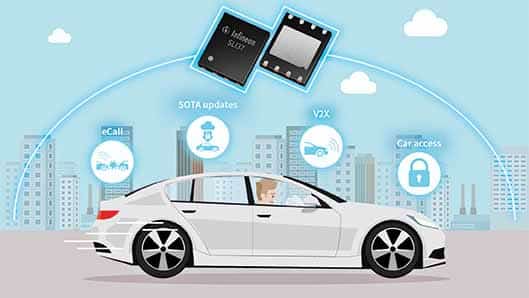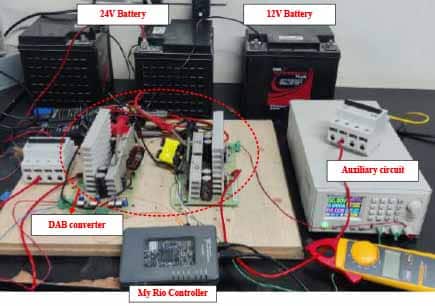Shinto Joseph, Director – South East Asia Operations at LDRA Technology Pvt. Ltd., an associate of LDRA Ltd. UK. busts the myths and realities around automotive safety and security in the Indian context.
Q. How do you see the 360-degree digitisation trend impacting the automotive industry?
A. The entire design, development, testing, certification, production, distribution, sales, and the after-sales service life cycle is getting digitised. This leads to tremendous cost and time savings when cars are becoming software-defined and no more mechanical. Millions of lines of software code drive modern software-defined cars. Modelling, simulation, and test automation tools bring together a distributed engineering workforce from different vendors and work centres across the globe.
Q. How do you see quality, safety and security comparatively evolving in the global automotive industry?
A. The automotive manufacturing process became a classic example of best quality practices globally, with the primary goal – Do it right, always right! Concepts like Six Sigma to the Spice model changed the dynamics in the automotive industry, reducing the defects in the manufacturing process to zero, resulting in reduced post-sales complaints and increased customer satisfaction.
The study on accident data of electronics and software-driven systems gave way to a risk-based approach to the systems engineering principles. Automotive functional safety standard ISO 26262 defines four safety integrity levels, from Automotive Safety Integrity Level (ASIL) A to ASIL D. ASIL D is the highest safety level. Once you define a subsystem for a specific safety integrity level, all your design considerations, development, testing, and certification will align with that. This has completely changed the industry. Quality principles will remain, and at the same time, the risk-based approach behind ‘Hazard’ and ‘Threat’ analysis practices for safety and security will continue to grow. Any OEM who understands this will survive; otherwise, they would be out of business with their mechanical cars very soon.
Q. How is the global regulatory framework evolving in the functional safety and security domain?
A. Even though the work on functional safety standards started much early, we could see off-late the cyber security standards and associated regulations moving at a faster pace. Undoubtedly, pressure from governments worldwide on the national security front added to the accelerated pace of cyber security framework development in the automotive industry. The new UNECE WP.29 cyber security regulatory framework by the UN charter for the European automotive industry will be a game changer. It will kick start in 2023 at the ECU level for new vehicles. As we go forward, existing vehicles and the current architectures will also be covered under it. Initial work started by SAE led to the development of the SAE J3061 cyber security standard. Later SAE joined hands with ISO, as that would lead to a wider international acceptance. Today we have ISO 21434, the base standard for European WP.29 regulations. Standards and regulations always go hand in hand. We have seen increasing demand from customers in the automotive sector asking for ISO 26262 functional safety compliance, even though it is not a regulatory requirement. But a court case around an accident could change everything. Looking at customer safety, both functional safety and security should go hand in hand.

Shinto Joseph, Director – South East Asia Operations at LDRA Technology Pvt. Ltd., an associate of LDRA Ltd. UK.
Q. What are all the real costs of lower automotive safety standards in the Indian context?
A. Overall, road safety depends primarily on vehicle safety, road safety, and driver behaviour. The one which needs to be addressed is vehicle safety because with anything going wrong with the other two, to some extent, vehicle safety could help you in reducing the accident impact. By lowering vehicle safety, we may achieve better price points and fuel efficiency, but at the cost of human life. We see two types of costs. One is the social cost. When somebody dies, we lose a breadwinner, which affects his family. The second is the economic cost. As per the FICCI India Risk Report, we are losing nearly 2.5 per cent of India’s GDP yearly to road accidents! Both these are high priorities for the government now, and we can expect more necessary policy changes as we go forward.
Q. How far is cyber security important for modern cars?
A. With more and more electronics and software getting added to every part of the car, internal and external attack surfaces are increasing. As we know, safety and security are two sides of the same coin. If security is breached, naturally, the car is unsafe. Given the socioeconomic and geopolitical scenarios worldwide, every possibility is there to use vehicles on our roads, even as a weapon. Another important consideration is the privacy aspects of the vehicle data and how far that data is to be shared with local governments and foreign OEMs. For Example, in an Indian context, adding an ISRO NavIC chipset to the car, along with regular GPS for vehicle tracking, is one of the first steps in that direction. So cyber security is going to be the focus area, probably even above the safety concerns.
“Once you define a subsystem for a specific safety integrity level, all your design considerations, development, testing, and certification will align with that. This has completely changed the industry.”
Q. As the Government of India aims to mandate a crash test star rating for vehicles in India, where do you see the Indian automotive industry standing today?
A. Mandatory NCAP star rating for cars is the first step our government could take towards improving overall vehicle safety in our country. However, I believe that the government might ask car manufacturers to declare their star ratings, and we might not enforce that with mandatory levels. It could be left to the customers to decide whether to buy a five-star or even a two-star rated vehicle. But this would influence the mindset of customers while making a purchase decision. Instead of just looking at the price and fuel efficiency, which might have been achieved by overall weight reduction at the cost of safety, customers will start preferring five-star rated cars, which come at higher price points.
The trend is already visible, with Indian OEM car sales skyrocketing recently, backed by their safety campaigns. As the market matures, manufacturers will start looking at the functional safety aspects of individual subsystems like air bags, brakes, etc. This would change the overall vehicle safety paradigm in the Indian context. Of course, the regulatory framework and national standards by BIS also need to be evolved over a period. Today we are not that great in that part. Industry and government should work together to make it happen with a staggered approach without hurting the local industry overnight.
“Undoubtedly, pressure from governments worldwide on the national security front added to the accelerated pace of cyber security framework development in the automotive industry. The new UNECE WP.29 cyber security regulatory framework by the UN charter for the European automotive industry will be a game changer.”
Q. In your opinion, what should be done to maintain the overall growth momentum of automotive exports out of India?
A. The automotive industry provides jobs for the masses, not only for engineers, unlike the IT industry. Hence, the growth of the automotive sector is significant for the overall economy, especially from the job creation point of view. Also, the growth in the automotive sector compensated for the dip in export growth in some other industries, showing its importance in bringing forex to our country. We will have to transform our automotive industry in India in line with the 360-degree digitisation trend happening across the globe, where cars are becoming software and no more mechanical ones. We need a complete paradigm shift from top management, skills, and reskilling of existing employees, to capture this new opportunity. But I am sure that our industry will cope, as significant efforts have been made by the stakeholders, backed by government support. Industry bodies, skilling agencies, universities, and regulatory agencies are working towards that. Our national standards are also talking about aligning with global trends nowadays.
Q. As the global leader in embedded software safety and security, what are the contributions of LDRA in improving the overall ecosystem of automotive safety and security in the Indian context?
A. LDRA comes with more than 45 years of global expertise in the embedded Software, safety, and security market. Our tools are used by our clients to test and validate the code for Quality, Safety and Security. Today, automotive is the most significant market for us as far as growth is concerned, even though our traditional clients are from Aerospace and Defence. After starting our Indian operation in 2010, we have contributed much to developing the overall local ecosystem. Our business grows only when the local ecosystem comes up. Hence, we launched an ecosystem program called Certification Ecosystem Development Program (CEDP) in 2014. It has various components like conferences, academic initiatives, training centres, and consulting and mentoring programs.
We implemented that in the aerospace and defence domain first. We are implementing the same for the automotive industry today. We want to expand it, backed by the skilling programs through direct physical and virtual training and our skilling partners in the industry and academia. We contribute to developing global standards. We are keen on engaging with the regulatory and national standards bodies to share our expertise. Most global semiconductor players, major automotive OEMs, and tier 1 vendors are our customers today. We thank all the stakeholders for their support and encouragement in our efforts to create a world-class automotive safety and security ecosystem in India. ACI
——————————————————–
Shinto Joseph is currently working as Director – South East Asia Operations at LDRA Technology Pvt. Ltd., an associate of LDRA Ltd. UK. He did his B.Tech in Computer Science from TKM College of Engineering, Kerala and MBA in Marketing from School of Business and Management, CHRIST Deemed to be University Bengaluru. With over 25 years of experience handling Embedded Software Life Cycle solutions, he has built many teams and companies in the embedded systems field.
Courtesy – Mobility Engineering.









Leave a Reply